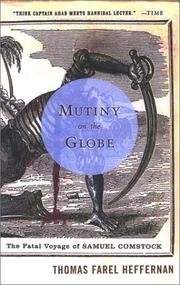What do you think?
Rate this book


Paperback
First published April 29, 2002
While still on the Japan Ground the Globe had a gam with the 413-ton Enterprise, on the deck of which something happened that was insignificant at the time but would come to life again during the mutiny and add one more bit of viciousness to the tragedy. A party from the Globe, including Third Mate Fisher and Boatsteerer Comstock, had gone on board the Enterprise. In a playful mood, which the spirit of the occasion encouraged, Samuel approached Fisher and challenged him to a wrestling match. Fisher was the more athletic of the two and had no difficulty winning the match. Samuel was enraged and punched Fisher, who easily went after him again and laid him on the deck. “I’ll see your heart’s blood for this,” Samuel said, but Fisher paid no attention to the threat, something that enraged Samuel even more. The humiliation never abated in Samuel’s mind.